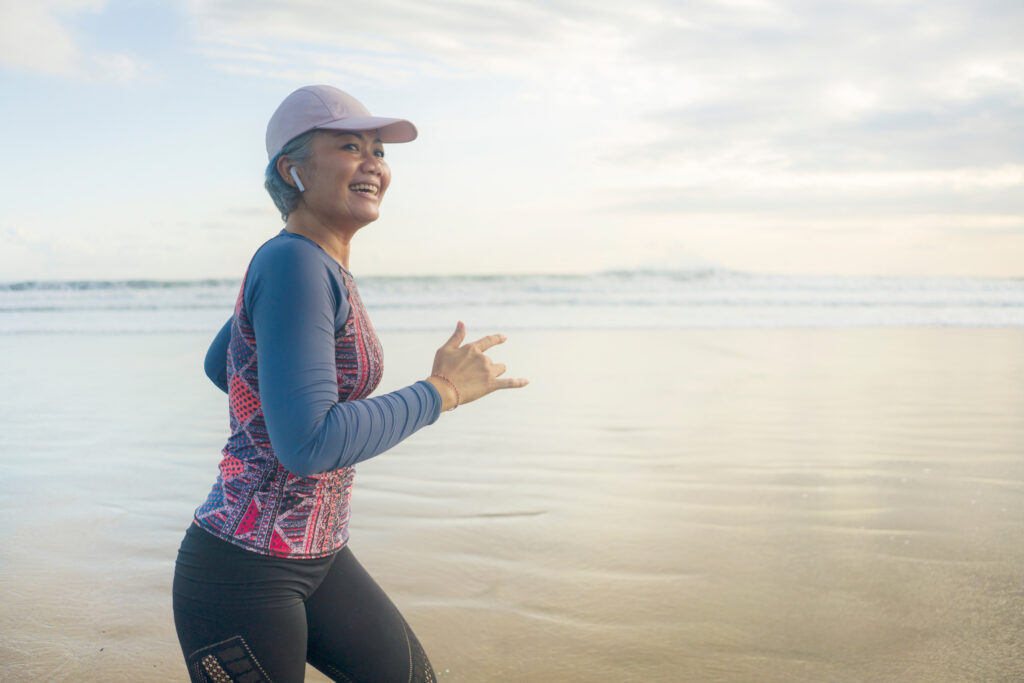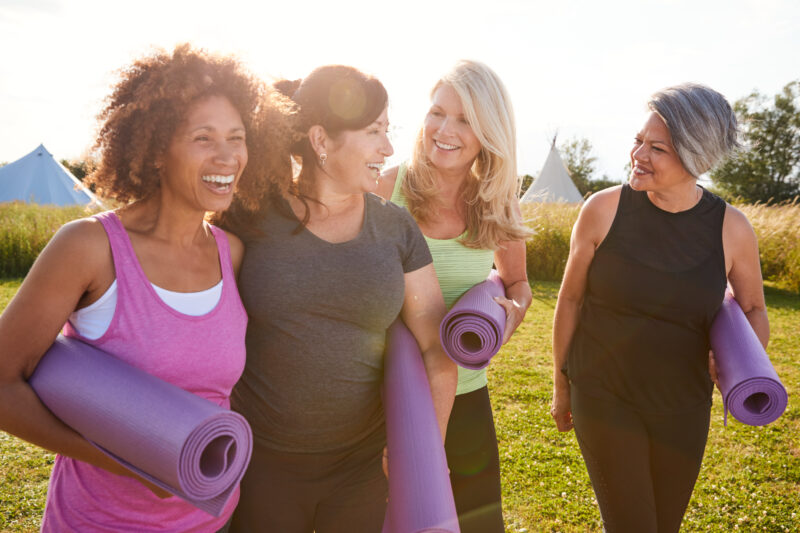The ticking of the clock is not a comforting sound for everyone. While it is not possible to stop it, you can slow the hands of time and its effects on your body. Skip the skin-deep beauty creams that promise a more youthful appearance. You can fight aging both mentally and physically with exercise.
Everyone knows that physical activity is good for you, no matter your age. That doesn’t mean that everyone is exercising. The Centers for Disease Control estimates that 27.5% of adults over 50 do not participate in any exercise outside of normal life activities. This increases to 35.9% of adults 75 and older. Seniors with chronic health conditions are even less likely to exercise. So if only one in four older adults gets the exercise they need, what is stopping the other three?

Older adults may think that they need less physical activity as they age or that risk of injury outweighs any potential benefit of exercise. Seniors may think if they can’t keep up with twenty-somethings at the gym, there’s no use in trying at all. Caregivers and family members often view older adults as weak and frail, further discouraging exercise. Dispelling these myths is vital because half of the physical decline experienced in many seniors may be due to lack of exercise.
Older adults don’t need to start training for a triathlon to reap the benefits of physical activity. Simply taking the stairs or doing yard work makes a real difference in your health. Research has shown that exercise can delay the onset of forty chronic conditions and greatly improve cognitive function. Strength, flexibility, and organ function improve with exercise. You can even see benefits down to your DNA. Here are some examples of how seniors who safely exercise can improve the quality of their lives and slow the dreaded aging process.
Exercise is good for aging bones
Bones become weakened over time. In severe cases, a condition called osteoporosis develops with the loss of bone mass and inability to make new bone. Brittle bones may lead to balance problems and a higher likelihood of falls and broken bones. Exercise regularly to prevent further bone loss and keep the strength and density you have. In combination with good nutrition, exercise will keep your bones younger longer.
Exercise helps keep the muscles going
We also lose muscle mass as we age, a process known as sarcopenia. Reduced muscle mass can lead to reduced motor function and mobility. Strength training, for example, can increase muscle mass and help seniors with coordination. Exercising back and shoulder muscles improves posture and can prevent degenerative joint disease that may lead to pain and lower range of motion. Strong muscles keep seniors independent for longer, as activities like opening a jar or climbing stairs won’t require assistance.
Exercise improves your heart and lungs
When you exercise, your heart and lungs work together to supply the oxygen your muscles need to perform. Sustained exercise makes your body more efficient at delivering oxygen in the bloodstream to your muscles. Your lung capacity will improve. Over time, you will be less short of breath while engaging in physical activity. Improved heart health reduces risk of heart attack and stroke. Exercise reduces blood pressure and improves overall cardiac function because you can pump more blood with each beat.
Exercise goes straight to the brain
With an increased heart rate, more oxygen is pumped to the brain. This aids in the release of hormones that promote growth of new neural connections. The effect of exercise such as reducing insulin resistance and inflammation indirectly supports the abundance and overall health of new brain cells. Older adults will also enjoy reduced stress and improved mood that comes with physical activity. A reduction in stress hormones improves mood and can help prevent depression. Exercise also leads to better sleep, which further improves memory and reduces anxiety.
Exercise has a positive impact on your DNA
A distinctive structure that caps the end of our chromosomes is called a telomere. These structures shorten as we age and affect the body’s ability to divide cells. Shortened telomeres are associated with high blood pressure, heart disease, and other chronic health conditions. Shortened telomeres are more abundant in individuals who have sedentary lifestyles. Regular exercise has been linked to longer telomeres, thus likely reducing the risk of diseases related to age.
It is never too late to start adding physical activity to your routine. The effect of exercise is cumulative, so exercising even a little each day is better for your overall health. Exercise can be tailored to the abilities of each senior, so no one has to be left out of the health benefits of exercise. Be sure to make smart choices before you jump in. Check with your physician before starting any exercise routine, and listen to your body to know when it is time to stop.
Aging is inevitable, but exercise helps you stand tall, breathe easy, smile more and add quality to the time you have. Another birthday never hurt anybody.
— Ruegsegger GN and Booth FW. Health Benefits of Exercise. Cold Spring Harb Perspect Med. 2018 Jul 2;8(7):a029694.
